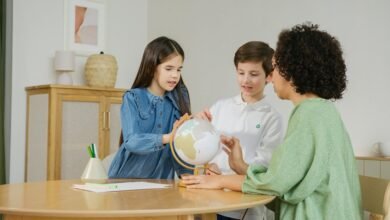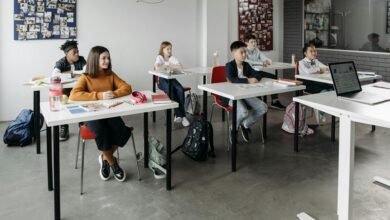Class: Classroom Resources for Students and Teachers

Classroom resources significantly impact the educational landscape. Innovative learning tools and engaging lesson plans cater to diverse learning styles. These resources are not merely supplementary; they shape the classroom experience. A supportive environment enhances collaboration and fosters critical thinking. As educators explore effective strategies, they must consider how these elements intertwine to support student growth. What specific approaches can transform a traditional classroom into a dynamic learning hub?
Innovative Learning Tools
As educators seek to enhance student engagement and learning outcomes, innovative learning tools have emerged as essential resources in the modern classroom.
Gamified learning fosters motivation through interactive experiences, while digital collaboration encourages students to work together, transcending geographical barriers.
These tools not only transform traditional learning environments but also empower students, promoting autonomy and creative problem-solving in their educational journeys.
Engaging Lesson Plans
Engaging lesson plans serve as the backbone of effective teaching, providing structured yet flexible frameworks that stimulate student interest and participation.
Incorporating project-based learning allows students to explore real-world problems collaboratively, fostering critical thinking.
Additionally, technology integration enhances learning experiences, making lessons more interactive and relevant.
Together, these approaches empower students to take ownership of their education, promoting a deeper understanding of the subject matter.
Strategies for Diverse Learning Styles
Recognizing that students possess varied learning styles is essential for effective instruction, as it enables educators to tailor their teaching strategies accordingly.
Utilizing visual aids enhances comprehension for visual learners, while cooperative learning fosters engagement among students who thrive in social settings.
Creating a Supportive Classroom Environment
A supportive classroom environment plays a pivotal role in fostering students’ academic and emotional growth.
Effective classroom decor, such as inspiring posters and comfortable seating, enhances engagement.
Furthermore, encouraging peer support cultivates a sense of community, allowing students to collaborate and thrive together.
Conclusion
In conclusion, effective classroom resources significantly enrich the educational experience for both students and teachers. Studies show that schools implementing diverse learning tools can improve student engagement by up to 60%. By embracing innovative technologies, developing engaging lesson plans, and accommodating various learning styles, educators foster a supportive environment that not only enhances academic performance but also nurtures emotional growth. Ultimately, these resources contribute to a holistic approach to education, preparing students for future challenges and successes.




